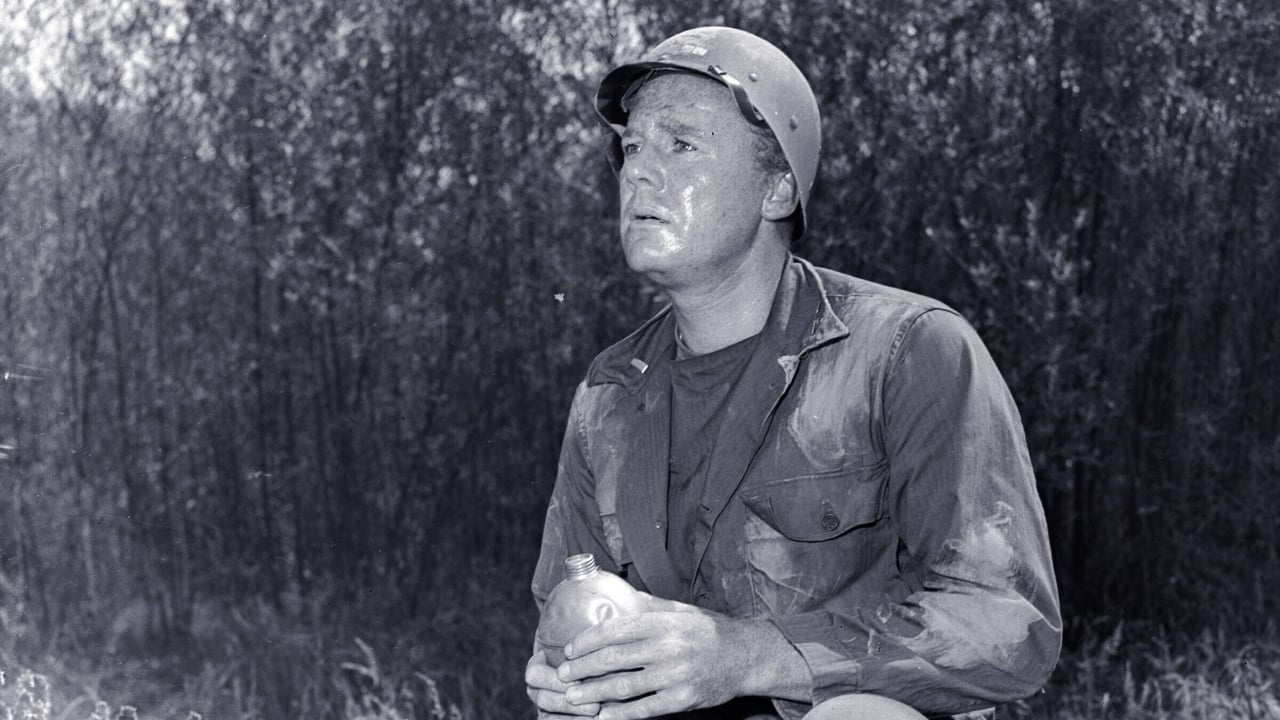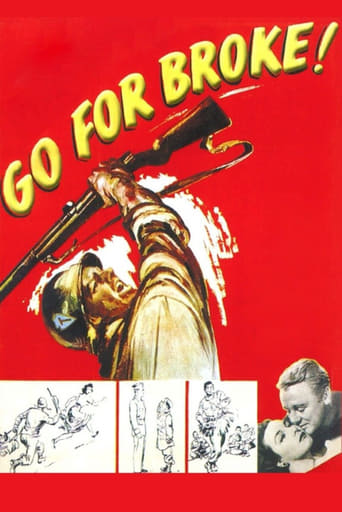

Purely Joyful Movie!
... View MoreA lot of perfectly good film show their cards early, establish a unique premise and let the audience explore a topic at a leisurely pace, without much in terms of surprise. this film is not one of those films.
... View MoreAlthough I seem to have had higher expectations than I thought, the movie is super entertaining.
... View MoreThere's a more than satisfactory amount of boom-boom in the movie's trim running time.
... View MoreTHERE IS LITTLE reason to believe that the United States, "America", is not the 'Land of the Free and the Home of the Brave'; as our advertising slogans all claim. It is also true that many an inequity toward certain segments of our society, have and do exist.WE CAN ALSO can rightly, and proudly proclaim that the platitudes that we've proposed in the Declaration of Independence and The Constitution have had and continue to have an uncanny ability to rectify problems that would isolate whole groups pf Americans from full recognition and participation. Hence, the foundations of the American Republic, which were originally considered to be inclusive to the founding peoples' ethnicity and race (being Caucasians from Northern and Western Europe); others being 'excluded' by omission, rather than by design.* IT WOULD APPEAR that no particular racial-ethnic-national grouping had received a pass from this process; least of all being those those whose ancestors are numbered among those people who arrived on the shores of the New World from Asia. Being called by the now apparently politically incorrect term of "Orientals", the Chinese coolies and others who were imported to provide labor in building the trans-continental railroad and they received treatment that was little better than that of chattel; even after slavery was officially outlawed in all States and Territories of the USA.THIS DISREGARD OF the full rights and humanity of those from the 'Yellow Race' continued and persisted for many a year. Right down to the years of there existed an immigration law called 'The Chinese Exclusion Act': which disqualified the immigration of Chinese to the United States in the same quota manner afforded to those applicants from other countries.NOW, LET US fast-forward time to the year of 1941 and the attack on Pearl Harbor of December the 7th. Fear of a Japanese invasion of the West Coast coupled with old anti-Asiatic sentiment spawned the creation of the "Neisi Relocation Centers". Following an Executive Order from President Franklin D. Roosevelt and at the urging of California Governor, Earl Warren, Japanese living in the Western States were required to sell whatever real estate that they owned (their abodes or places of business) and submit themselves to being prisoners of the U.S. Government for the duration of World War II.THE EXISTENCE AND use of what were called Internment Camps during time of war wasn't new. Their application was commonplace and the practice was widely in use in Europe during the First World War. There was, however, one important difference; that being that those being held in these Internment Camps were FOREIGN NATIONALS of Nations who were at war with that particular country.SO THEN, WE had a great story that needed telling. We had a special combat unit of the United States Army, the 442nd Combat unit. It was special battle unit composed of enlisted men and non-coms (non-commissioned officers, sergeants & corporals) who were Americans of Japanese descent. Being a people who were on a mission and their record in the battlefields of the European Theatre of Operations was outstanding and acclaimed to be second to none; particularly in the Italian Campaign, which included assaults on cities in Sicily, Anzio and Rome.THAT MGM HAD DECIDED to do a film that brought this all to the screen is less of a surprise than it was one of those overdue projects upon release in 1951. While the production boasted of many an actor from MGM's outstanding stable (including popular Van Johnson in the top billing spot), it is the choice of the extensive cast portraying the Japanese American Soldier that makes this the fine movie that it remains to this very day.WE HAD LONG felt that there was a great similarity of GO FOR BROKE to MGM's BATTLEGROUND; which in similar manner told the story of the true heroes of Bastogne (the Battle of the Bulge). Having just recently seen the trailers produced for both pictures, we found that the head honchos at the studio concurred.MY MY. SUCH great minds have we! NOTE: * This is not to say that all being of the Caucasion persuasion would guarantee full acceptance to a person in all things 'American'. If you don't believe us, just ask those whose ancestors came from Southern Europe (Italians), Eastern Europe (Polish) and old Russia & the Ukrane(Jews). In my own case both my Mother's people (German) and the 'Old Man's' (Irish) paid their dues. (Oh yeah, we nearly forgot! The Irish were also imported to help build the transcontinental railroad! Whatta ya know, a sorta footnote to a footnote! Another Red Ryan 1st!)
... View MoreWith tomorrow being Memorial Day, I decided to finally watch this movie about the 442nd regiment consisting of Japanese-American soldiers who volunteered in order to escape the internment camps their families were sent to after Pearl Harbor. Van Johnson is their superior officer who initially isn't crazy about leading them since he's from Texas and wants to go with the regiment consisting of men from his background, not to mention skin color. I'll stop there and just say that while there were some exciting battle scenes and some gently humorous ones as well, I didn't think the script spent enough time with Johnson and his Asian-American men in showing how he gradually came to admire and like them. At least not in the natural way I expected as part of me seemed to think the transition seemed abrupt when he met with one of his Texas-bred colleagues who expressed his prejudices more blatantly causing him to punch him. Maybe I was thinking too much of that scene as I did find touching many of those men's situations especially the one with the pig he kept for a pet. And there is a rousing sense of pride in seeing everyone, regardless of skin color or culture, banding together to fight for the common good. So on that note, Go for Broke! gets a recommendation from me.
... View MoreThis film held a few surprises for me and it may for many other people as well. I don't think it is spoiling the film at all to say that it mainly concerns the activities of a Japanese regiment which took part in campaigns in the European theatre in the latter part of WWII. Obviously, the mere thought of infantrymen looking and sounding like Japanese, but wearing American GI uniforms, was hard for a number of people to accept, and this is where the film draws its dramatic tension as these not-so-usual American troops try to redeem the bad name of their ancestral lands.Well-directed with certain dramatic generic battle scenes (added from newsreels and other sources I imagine) to give the film more impact. As usual in films of this era, the character acting is very good, and this in spite perhaps of the limited number of actors who might have been available at the time to play roles as GIs of Japanese origin. Very competent lead role played by Van Johnson is also a major plus for this entertaining, thoughtful film.
... View MoreBeing a third generation Japanese-American (Sansei), and having my parents interned in the camps, this movie has a special place in my heart. Robert Pirosh did an incredible job in getting so much information about the Japanese- American situation: the camps, the differences between the Hawaiian and State- side Japanese (Kotonks and Kanakas), the different views of the war and even using a Japanese curse word as a password! I was so impressed and pleased with the results.The movie follows the exploits of the 442, the first all-Nisei (Japanese- American) Regimental combat team in WWII. In early 1942, all the Japanese- Americans in California, Seattle, Oregon and Hawaii were uprooted from their homes and put into camps. All the volunteers were from the 10 internment camps throughout the western states. They felt that this was the only way to prove to the U. S. that they were as patriotic as anybody else, in fact most of them were American Citizens! Since they had nothing to lose, but their lives, their motto was "GO FOR BROKE!" and that's what they did. They are today the most decorated battalion in the history of the U.S. military and proved something that they shouldn't have to be proved, that they were Americans!Van Johnson is used as the "white man" foil, to show how the rest of the country looked at the Japanese-American, and he does a great job. He starts off as a bigot, but as he begins to understand and respect his troops, he becomes one of them. There's a funny scene where one of his men call him "BAKATARE",which is a curse word close to "Damn, stupid...." and tells him that the soldier is being very polite, he's bowing as he says this. This film has everything: humor, action, great characters and... truth!
... View More